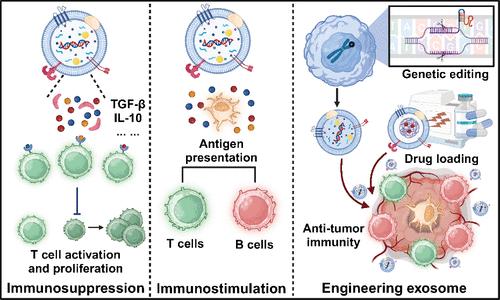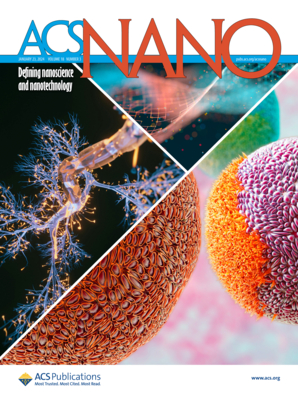Tumor Microenvironment-Derived Exosomes: A Double-Edged Sword for Advanced T Cell-Based Immunotherapy
IF 15.8
1区 材料科学
Q1 CHEMISTRY, MULTIDISCIPLINARY
引用次数: 0
Abstract
The tumor microenvironment (TME) plays a crucial role in cancer progression and immune evasion, partially mediated by the activity of the TME-derived exosomes. These extracellular vesicles are pivotal in shaping immune responses through the transfer of proteins, lipids, and nucleic acids between cells, facilitating a complex interplay that promotes tumor growth and metastasis. This review delves into the dual roles of exosomes in the TME, highlighting both their immunosuppressive functions and their emerging therapeutic potential. Exosomes can inhibit T cell function and promote tumor immune escape by carrying immune-modulatory molecules, such as PD-L1, yet they also hold promise for cancer therapy as vehicles for delivering tumor antigens and costimulatory signals. Additionally, the review discusses the intricate crosstalk mediated by exosomes among various cell types within the TME, influencing both cancer progression and responses to immunotherapies. Moreover, this highlights current challenges and future directions. Collectively, elucidating the detailed mechanisms by which TME-derived exosomes mediate T cell function offers a promising avenue for revolutionizing cancer treatment. Understanding these interactions allows for the development of targeted therapies that manipulate exosomal pathways to enhance the immune system’s response to tumors.

肿瘤微环境衍生的外泌体:基于 T 细胞的高级免疫疗法的双刃剑
肿瘤微环境(TME)在癌症进展和免疫避避中起着至关重要的作用,部分是由TME衍生的外泌体的活性介导的。这些细胞外囊泡通过蛋白质、脂质和核酸在细胞间的转移,在形成免疫反应方面起着关键作用,促进了复杂的相互作用,从而促进了肿瘤的生长和转移。这篇综述深入探讨了外泌体在TME中的双重作用,强调了它们的免疫抑制功能和新出现的治疗潜力。外泌体可抑制T细胞功能,并通过携带PD-L1等免疫调节分子促进肿瘤免疫逃逸,但它们作为传递肿瘤抗原和成本刺激信号的载体,也为癌症治疗带来了希望。此外,这篇综述还讨论了外泌体介导的肿瘤组织间质内各类细胞之间错综复杂的串扰,从而影响癌症的进展和对免疫疗法的反应。此外,这还强调了当前的挑战和未来的方向。总之,阐明TME衍生的外泌体介导T细胞功能的详细机制为彻底改变癌症治疗提供了一条大有可为的途径。了解了这些相互作用,就能开发出操纵外泌体通路的靶向疗法,从而增强免疫系统对肿瘤的反应。
本文章由计算机程序翻译,如有差异,请以英文原文为准。
求助全文
约1分钟内获得全文
求助全文
来源期刊

ACS Nano
工程技术-材料科学:综合
CiteScore
26.00
自引率
4.10%
发文量
1627
审稿时长
1.7 months
期刊介绍:
ACS Nano, published monthly, serves as an international forum for comprehensive articles on nanoscience and nanotechnology research at the intersections of chemistry, biology, materials science, physics, and engineering. The journal fosters communication among scientists in these communities, facilitating collaboration, new research opportunities, and advancements through discoveries. ACS Nano covers synthesis, assembly, characterization, theory, and simulation of nanostructures, nanobiotechnology, nanofabrication, methods and tools for nanoscience and nanotechnology, and self- and directed-assembly. Alongside original research articles, it offers thorough reviews, perspectives on cutting-edge research, and discussions envisioning the future of nanoscience and nanotechnology.
 求助内容:
求助内容: 应助结果提醒方式:
应助结果提醒方式:


